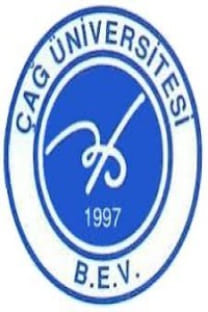Türkiye’de Örtük Liderlik Kuramı: İçeriği ve Yapısı
Örtük liderlik kuramı, insanların çocukluklarından itibaren birçok farklı girdinin etkisiyle zihinlerinde şekillendirdiği ve içselleştirdiği lider modelini ifade etmektedir. İnsanlar genelikle zihnindeki modele uygun kişileri lider olarak kabul etme eğilimindedirler. Bu bağlamda araştırmada Türk insanının içselleştirdiği lider modelinin ne olduğuna ilişkin ilk ipuçlarının ortaya çıkarılması hedeflenmiştir. Çalışma iki aşamalı yürütülmüş, ilk aşamada değişik statü ve meslek grubuna dâhil olan 117 kişinin fikirlerinden yola çıkılarak Türk tipi örtük lidere ilişkin bir nitelik havuzu oluşturulmuştur. Ardından bu niteliklerden en çok ifade edilenler bir araya getirilmiş ve 88 maddeden oluşan örtük liderlik anketi geliştirilmiş ve farklı il ve statülerden 384 kişiye uygulanmıştır. Yapılan keşfedici faktör analizi neticesinde, benzerlik içeren ve anlamsız bulunan 58 madde ölçekten çıkarılmış, kalan 30 madde ile tekrar keşfedici faktör analizi yapılmıştır. Sonuç olarak Türkiye’de örtük liderliği açıklayan 6 faktörlü bir yapı elde edilmiştir
Anahtar Kelimeler:
Liderlik, Örtük liderlik
The Concept of Implicit Leadership in Turkey: Content and Framework
Implicit leadership theories represent leader models that people shapes in their minds by the very earlier stages of their lives. People have tendency to approve individuals as leaders whose characteristics fit these mental models. This study has been prepared to determine the implicit theory of leadership among Turkish people. The study has been conducted in two stages. Firstly a characteristic basin has been composed about leader in respect of the thougts of 117 participants that belong different status groups. Then by using this database, ILT scale, with 88 items, has been developed. At the second phase, ILT scale administrated 384 Turkish participants. According to the result of factor analysis 58 items removed from the scale and consequently 6 factors yielded about implicit leadership theories in Turkey
Keywords:
Leadership, Implicit leadership.,
___
- Bartunek, Jean M.;1984; “Changing interpretive schemes and organizational restructuring: The example of a religious order”, Administrative Science Quarterly, 29(3), pp. 355-373.
- Brodbeck, Felix C; vd.; 2000; “Cultural Variation of Leadership Prototypes Across 22 European Countries”, J. of Occupational&Organizational Psychology, 73(1), pp. 1-29.
- Eden, Dov; Uri Leviatan; 1975; “Implicit Leadership Theory as a Determinant of Factor Structure Underlying Supervisory Behavior Scales” Journal of Applied Psychology, 60, pp. 736-741.
- Engle, Elaine M.; Robert G. Lord; 1997; “Implicit Theories, Self-Schemas, And Leader-Member Exchange” Academy of Management Journal, 40-4, pp. 988-1010.
- Epitropaki, Olga; Martin, R.; 2004; “Implicit Leadership Theories in Applied Settings: Factor Structure, Generalizability, and Stability Over Time”, Journal of Applied Psychology, 89-2, pp. 293-310.
- Epitropaki, Olga; Martin, R.; 2005; “From Ideal to Real: A Longitudinal Study of the Role of Implicit Leadership Theories on Leader-Member Exchanges and Employee Outcomes”, Journal of Applied Psychology, 90(4), pp. 659-767.
- Foti, Roseanne J.; Carissa H. Luch; 1992; “The Infulence of Individual Differences on the Perception and Categorization of Leaders”, Leadership Quarterly, 3(I), 55-66.
- Hofstede, Geert; 1980; “Motivation, Leadership and Organization: Do American Theories Apply Abroad?”, Organizational Dynamics, pp. 42-63.
- House, Robert; N.S. Wright; R.N. Aditya; 1997; “Cross-Cultural Research on Organizational Leadership: A Critical Analysis and a Proposed Theory” New Perspectives on Internatıonal Industrial/Organizational Psychology The New Lexington Press, San Francisco, pp. 535-625.
- Hunt, J.G.; Kimerly B. Boal; Ritch L. Sorenson; 1990; “Top Management Leadership: Inside the Black Box” Leadership Quarterly, 1, pp. 41-65.
- Keller, Tiffany; 1999; “Images Of The Familiar: Individual Differences and Implicit Leadership Theories”, Leadership Quarterly, 10(3), pp. 590- 607.
- Keller, Tiffany;2003; “Parental Images as a Guide to Leadership Sensemaking: an Attachment Perspective on Implicit Leadership Theories”, Leadership Quarterly, 14, pp. 141-160.
- Konrad, Edward; 2000; “Implicit Leadership Theories in Eastern and Western Europe”, Social Science Information, 39(2), pp. 335-347.
- Koommoo-Welch, Penny;2008; Implicit Leadership Theories: Perceptions of Charisma, People, and Performance (Unpublished Ph.D. Thesis), Raleigh, North Carolina, North Carolina State University.
- Ling, Wenquan; Rosina S. Chia; Liluo. Fang; 2000; “Chinese Implicit Leadership Theory”, The Journal of Social Psychology, 140(6), pp. 729-739.
- Lord, Robert G.; Roseanne J. Foti; Christy L. de Vader; 1984; “A Test of Leadership Categorization Theory: Internal Structure, Information Processing, and Leadership Perceptions”, Organizational Behavior And Human Performance, 34, pp. 343-378.
- Offermann, Lynn R.; John K.Kennedy; Philip W. Wirtz; 1994; “Implicit Leadership Theories: Content, Structure, And Generalizability”, Leadership Quarterly, S(l), pp. 43-58.
- Paris, Lori D.; 2004; “The Effects Of Gender And Culture On Implicit Leadership Theories: A Cross-Cultural Study”, Academy of Management Best Conference Paper.
- Paşa, Selda F.; Hayat Kabasakal; Muzaffer Bodur;2001; “Society, Organizations, and Leadership in Turkey”, Applied Psychology: An International Review, 50(4), pp. 559-589.
- Rosch, Eleanor;1978; “Principles of Categorization”, in Eleanor Rosch, Barbara B. Lloyd (Ed.), Cognition and Categorization, Hillsdale, NJ: Erlbaum, pp. 28-48.
- ISSN: 1304-8392
- Yayın Aralığı: Yılda 2 Sayı
- Başlangıç: 2004
- Yayıncı: Çağ Üniversitesi
Sayıdaki Diğer Makaleler
Tüketim ve Yaşlı Tüketiciler: Literatür Araştırması
ORTA ASYA ENERJİ KAYNAKLARI VE ENERJİ BAĞLAMINDA ABD’NİN ORTA ASYA POLİTİKASI
Hüseyin KALYONCU, Shatlyk AMANOV
Türkiye’de Örtük Liderlik Kuramı: İçeriği ve Yapısı
Akif TABAK, Ali KIZILOĞLU, Mustafa POLAT
ORTA ASYA ENERJİ KAYNAKLARI VE ENERJİ BAĞLAMINDA ABD’NİN ORTA ASYA POLİTİKASI
Hüseyin KALYONCU, Shatlyk AMANOV
